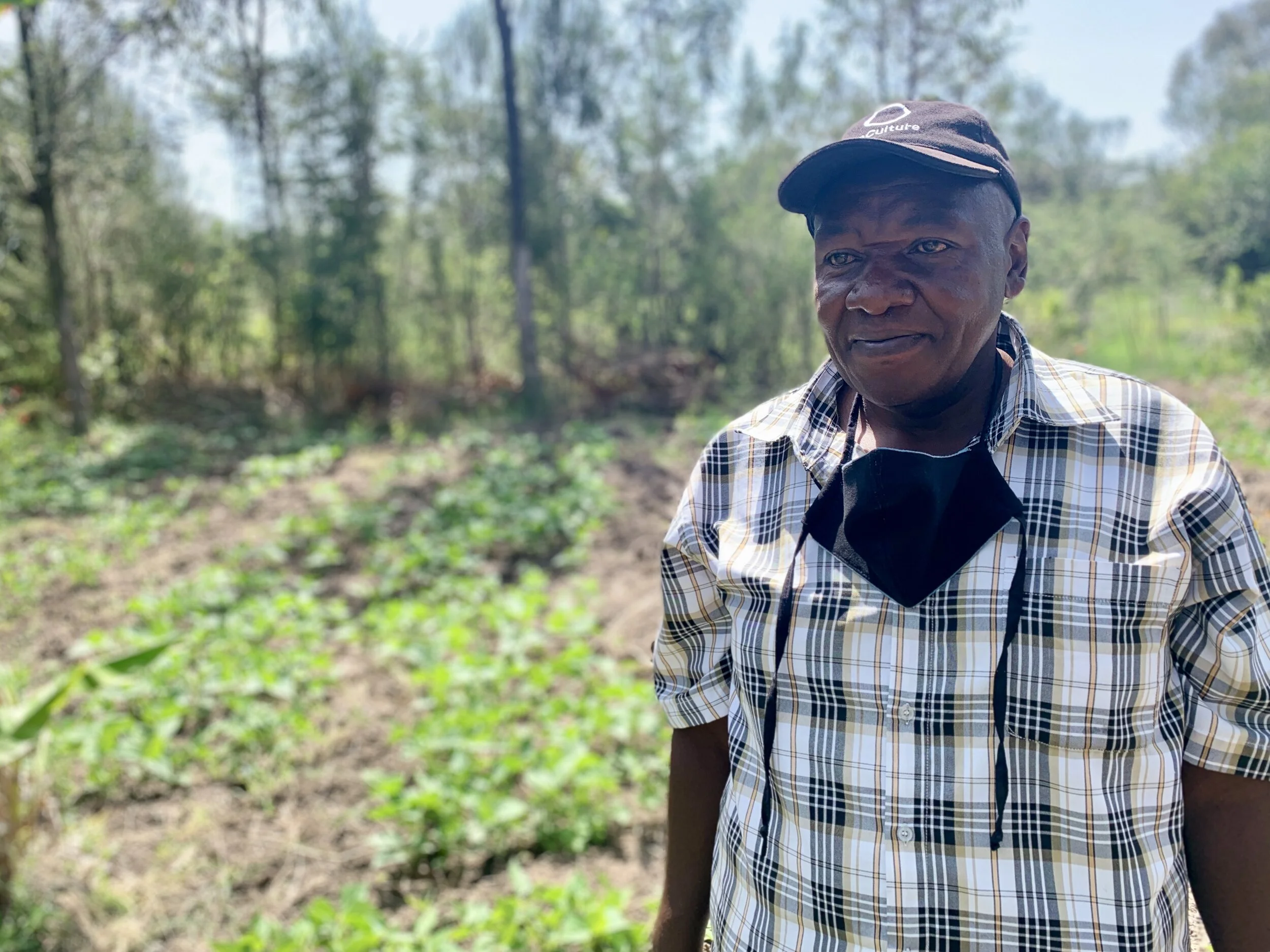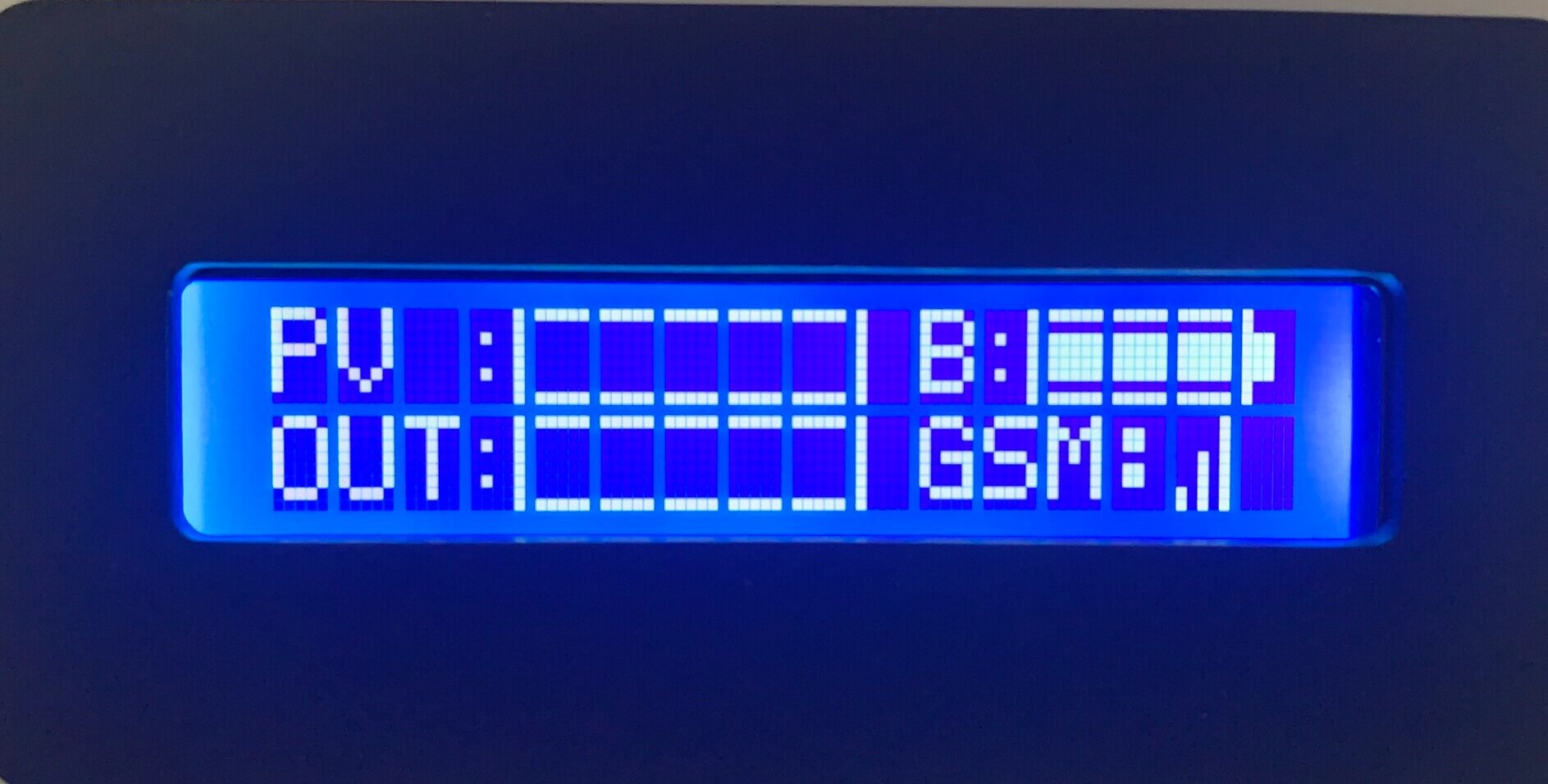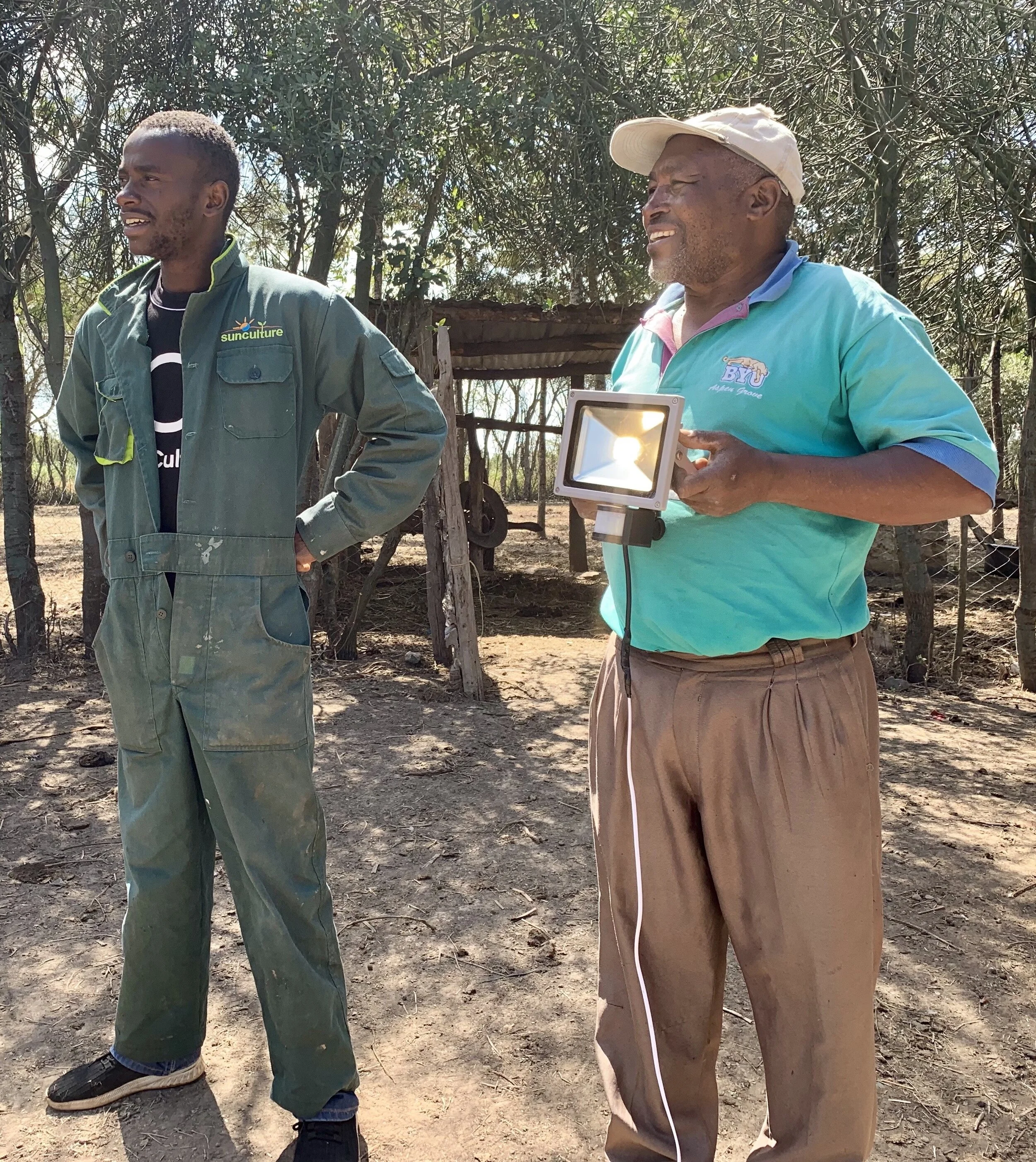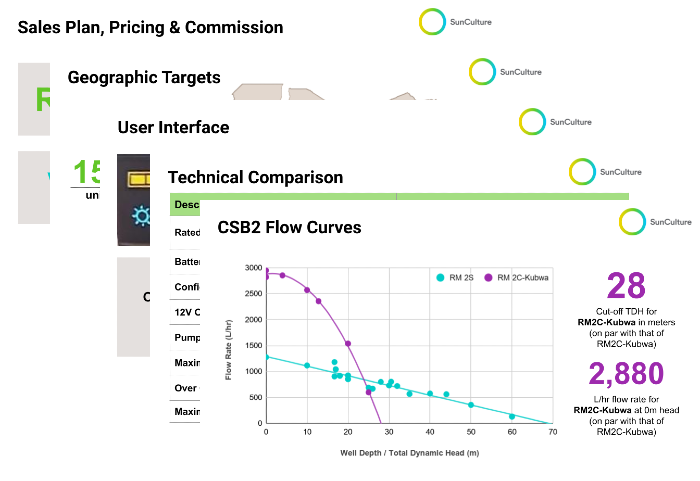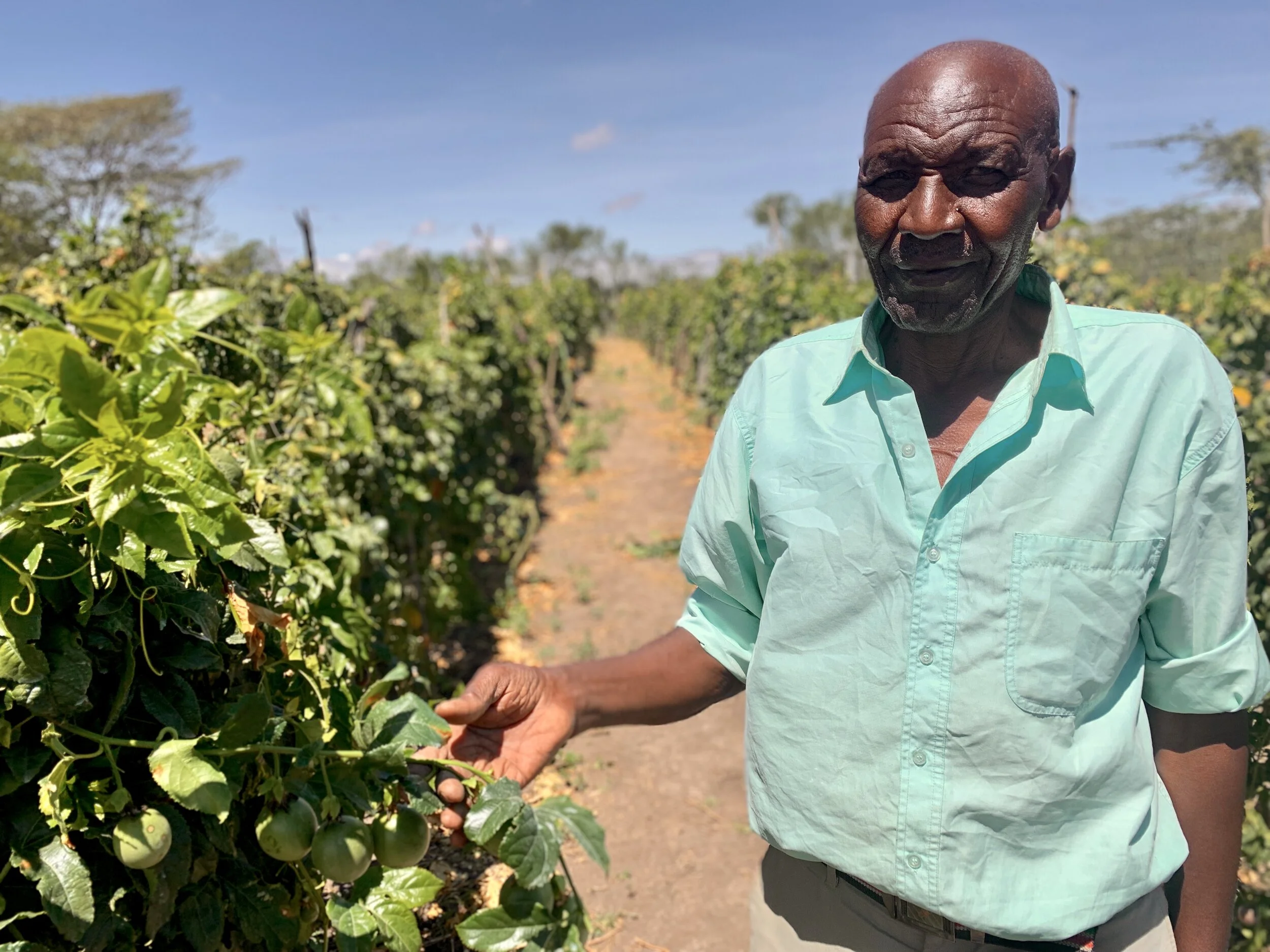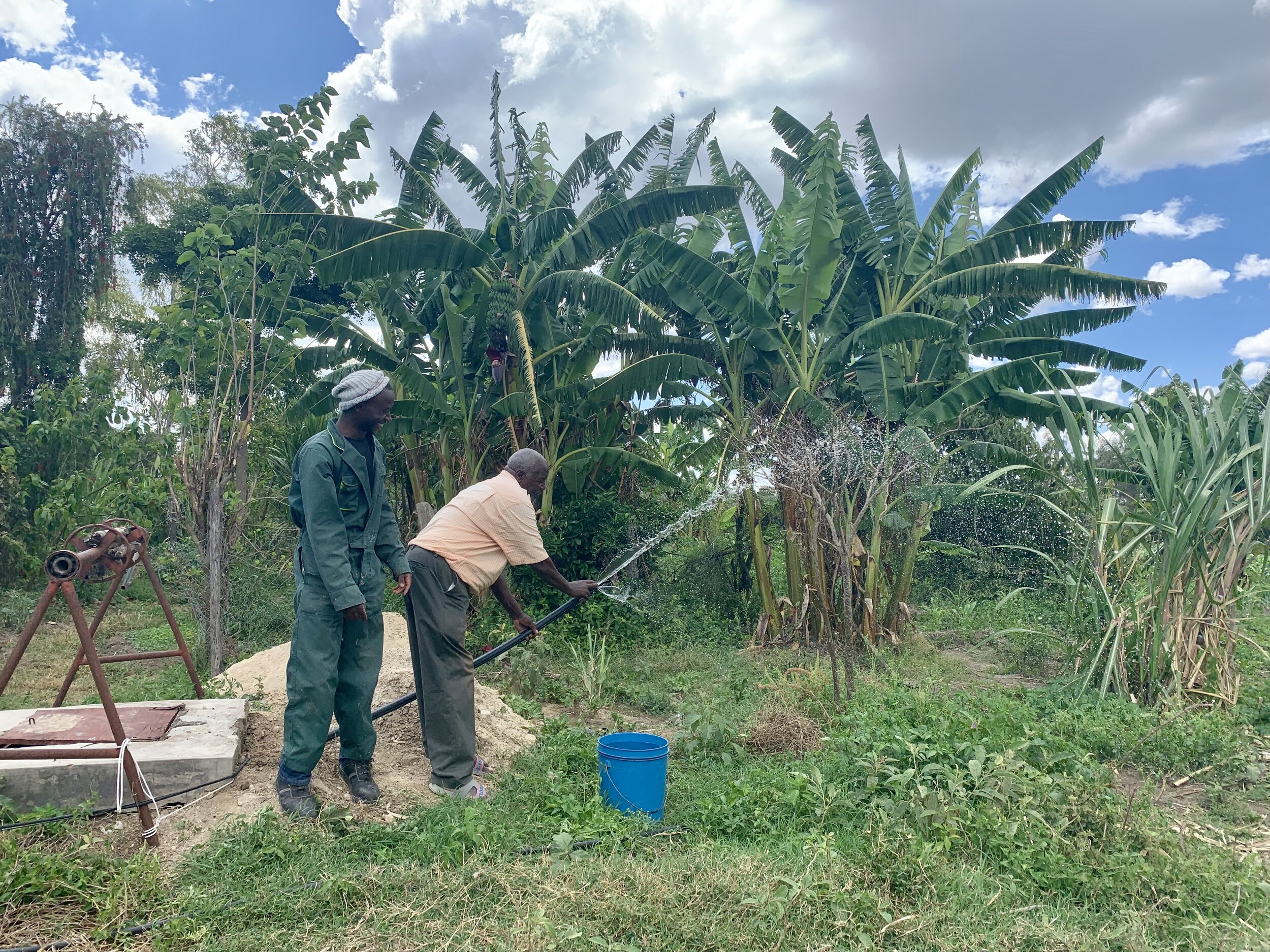
ClimateSmart Battery
SunCulture, Kenya | 2021 | Product Management
Empowering smallholder farmers with solar-powered water pumps that integrate into their lifestyles to solve their biggest challenges.
Roles & Skills:
Product management, project scoping, strategizing
User research, human-centered design
Integration and communication with engineers, supply chain, finance, and sales teams.
This work was done in collaboration with SunCulture Kenya in Nanyuki, Kenya.
Context & ClimateSmart Battery 2
SunCulture is a company based in Kenya working to develop and commercialize solar-powered water pumps to help small holder farmers. ClimateSmart Battery (CSB1) was developed to power a submersible water pump and also store energy to power 4 lights/TV and charge phones.
I was brought on in February 2021 to serve as a product manager for the pilot program of ClimateSmart Battery 2 (CSB2), a product designed to both solve some of the biggest technical and after-sale issues seen in CSB1 and also improve upon the user experience and interface. My team consisted of an electrical engineer, a field engineer, and an engineering project manager - all Kenyan.
The pilot was run with 25 existing SunCulture customers living in Matanya, a nearby rural village. I also worked to scope and strategize for the soft launch of 200 units to be sold beginning in August 2021.
User Research
To select the 25 pilot customers, the team created a list of criteria to ensure that CSB2 was getting tested and used in a wide range of scenarios. First, every pilot customer was an existing SunCulture customer with payment up to date on their current product. This was to ensure that if and when issues arose with CSB2, no customer would be left without a source of water.
After visiting and speaking with nearly 40 customers in Matanya, we divided them into categories based on farming and water usage. Our pilot program needed to test with customer who were traditional subsistence farmers (farming a wide variety of crops mostly for consumption and selling the excess), recreational farmers (had another primary source of income and primarily used the water for domestic use and the battery for TV/stereo purposes), and farmers who were “climbers” (focused on growing large quantities of few crops to sell as primary source of income, need for large quantity of water). Each type of farmer used the battery and the pump in unique ways that would test and stress CSB2 in different ways to help us uncover any issues.
Lastly, we selected customers who were responsive and able to provide open and honest feedback.
Fig. 1: LCD screen for ClimateSmart Battery 1 using English text/abbreviations
Fig. 2: Testing of icons
Fig. 3: Proposed LCD screen for ClimateSmart Battery 2 using iconography
Fig. 4: Icons displayed on the backplate of CSB2.
Enhancing User Interface
The focus of most of my work was on enhancing the user interface and experience of CSB1. This became particularly important as SunCulture began expanding to West Africa and other countries where English may not be spoken as widely as in Kenya.
As seen in figure 1, the LCD screen for CSB1 used English text to display information about the solar panels and charging rate (PV), water pump output (OUT), battery level (B), and cellular network (GSM). I found that many customers, even in Kenya, did not know what PV meant and had memorized that the information shown in the top left corner was related to the solar panels. Thus, I aimed to replace the English text with icons that could help enable customers who did not speak English (both in Kenya and other countries) to understand the information on the LCD screen easily and quickly.
After testing several options for icons with the pilot customers (figure 2), we came up with a re-design of the LCD (figure 3). This display will be tested in the soft launch of 200 units beginning in August where further testing can be done.
Finally, the icons were printed on the backplate of CSB2 to correlate with the various plugs and their uses (figure 4). For example, the plug for the water pump uses the same symbol as the water pump output display on the LCD.
New Product Exploration
Throughout my conversations with the customers, I also observed user needs that were within the realm of SunCulture’s work. For example, many customers used one of their lights powered by the battery as a security light. Thus, I worked with supply chain teams to source flood lights (of various wattages, with and without motion sensors, etc) to test with the pilot customers and with CSB2. I also sourced rechargeable flashlights and jet sprinklers as potential add-ons for the product.
Along with the user testing and feedback collected on the new products, I also ran technical tests to discover the power consumption of the flood lights, radius of coverage for the sprinklers at different total dynamic heads, etc.
Strategizing for Soft Launch
As the soft launch of 200 CSB2 units geared up to begin, my work began to focus heavily on strategizing and preparing for the launch date in August. I wrote a soft launch proposal including information on the location of the soft launch, KPAs, timeline, and tentative plans for the public launch. I worked closely with the sales team, product and supply chain committee, and finance teams to ensure that all teams were on board and in agreement with the proposal.
Throughout June 2021, the team prepared trainings for the field engineers, sales agents, and other relevant teams involved in the soft launch of CSB2. We trained over 50 people on the technical specifications of CSB2, the new user interface, how to install the product with customers, and general soft launch goals.
Our aim was not just to inform the teams about CSB2, but to also open the lines of communication for teams to come back to us with feedback from customers and also their own experiences selling or installing the systems.

